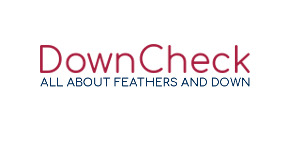Is there only one new labelling standard available?
Furthere informationen at :




NOMITE label indicates that duvets and/or pillows are suitable for house-dust-mite allergy sufferers. The KIS® Komfort Information System label will be of valuable help to you when choosing the duvet which best fits your Needs.


Further information at:

The differing labelling systems within Europe and the lack of comprehensibility of the old RAL concepts were the main reasons why a completely new labelling standard had to be formulated. The common efforts of the European countries resulted in the creation of the standard EN 12934.
Further information at :


It is only applicable to finished feathers and down and not to raw down and feathers.
Further information at :


1. Filling composition: percentage of down, percentage of feathers
The composition of a filling consisting of down and / or feathers is indicated in percentage by weight.
An exception from the 10%-rule are blends of 85 % feathers and 15 % down – they were previously labelled as "half-down" (in Germany in accordance with the former RAL- regulation and as "feather/down”"in UK according to British standard).
Classification into a certain class already includes that the filling contains material which has not previously been used as filling maetrial. Class I containing down and feathers deriving from geese and ducks only applies to material which has not previously been used.
Experts identify new material in particular by the percentage of “other elements“ not to be confused with “foreign matter” such as wool or synthetic fibres. “Other elements“ definitely refer to down and feathers meaning down and feather fibres (small parts split off from down and feathers), damaged and broken feathers and residue.
| Percentage of other elements (%) | Classification | Components and composition | |
Waterfowl fillings (Goose and duck) |
up to 5 | "class I" and / or "new" | Down ...% Feather ...% |
| more than 5 to 15 | "class II" | Down ...% Feather ...% |
|
| more than 15 | "class III" | Down ...% Feather ...% other elements ...% |
|
Fillings consisting of landfowl or land- and waterfowl |
up to 5 | "class IV" and / or "new" |
Down ...% Feather ...% |
| more than 5 to 15 | "class V" | Down ...% Feather ...% |
|
| more than 15 | "class VI" | Down ...% Feather ...% andere Elemente ...% |
|
| "class VII" | (unspecified composition) |
| Percentage(s) Composition | Denominations | |||
|
100
0
|
to to |
90,0 9,9 |
Goose
Duck
|
pure Goose |
|
89.9
10.0
|
to
to
|
70,0 29,9 |
Goose
Duck
|
Goose |
|
69.9
30.0
|
to
to
|
50,0 49,9 |
Goose
Duck
|
Goose / Duck |
|
69.9
30.0 |
to
to
|
50,0 49,9 |
Goose
Duck
|
Duck / Goose |
|
89.9
10.0
|
to
to
|
70,0 29,9 |
Goose
Duck
|
Duck |
| 100 0 |
to
to
|
90,0 9,9 |
Goose
Duck
|
pure Duck |
Accordingly, the addition “pure“ is only permitted with a percentage of the fowl species of at least 90%.